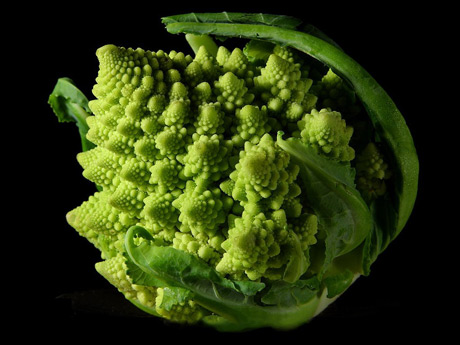
A familiar vegetable?
This is yet another case where
fractals can be used to model
nature. Note the self-similar
features that range from the
base to the tip of each "floret."
| Fractals - Overview |
 A familiar vegetable? This is yet another case where fractals can be used to model nature. Note the self-similar features that range from the base to the tip of each "floret." |
| A fractal is any pattern that
reveals greater complexity as it is enlarged. Zooming in on the
pattern reveals a reduced-size copy of the whole pattern. This
characteristic is called self-similarity and is the result of the recursiveness of the definition of the pattern. Fractals are also characterized by an irregular or "rough" geometry. For most fractals, this geometry is too irregular to be described in traditional Euclidean terms. This is actually an advantage when doing science in the natural world, since much of the natural world is also not Euclidean. However, most phenomena that have fractal-like structure aren't true fractals: they don't exhibit infinite recursion and self-similarity. Instead, they are quasi-fractals. |
|
Home
|
Overview
|
History
|
Tutorials
|
Multimedia and
Lectures Examples and Simulations | Advanced Topics |